A facet scatter chart shows data correlation and distribution. This topic describes how to add data to a facet scatter chart and configure the style of the facet scatter chart.
Prerequisites
A dashboard is created. For more information, see Create a dashboard.
Limits
When you create a facet scatter chart, you must specify measures and dimensions in the Y Axis (Mea.), X Axis (Mea.), and Color Legend (Dim.) sections.
You can specify only one measure in the Y Axis (Mea.) section.
You can specify one to three measures in the X Axis (Mea.) section.
You can specify only one dimension in the Color Legend (Dim.) section. The dimension can have up to 1,000 values.
For example, if you add product_type to the Color Legend (Dim.) section, up to 1,000 product types can be displayed.
Overview
Scenarios
Two sets of data are used to form multiple coordinate points. A facet scatter chart is used to show the correlation and distribution of the data.
Used to provide key information:
Whether a relationship exists among variables.
Whether the relationship among variables is linear or not.
Whether one or more outliers exist. You can further analyze whether the outliers affect modeling analysis.
Benefits
Computing power: A facet scatter chart automatically calculates the conversion rate.
Effect diagram example
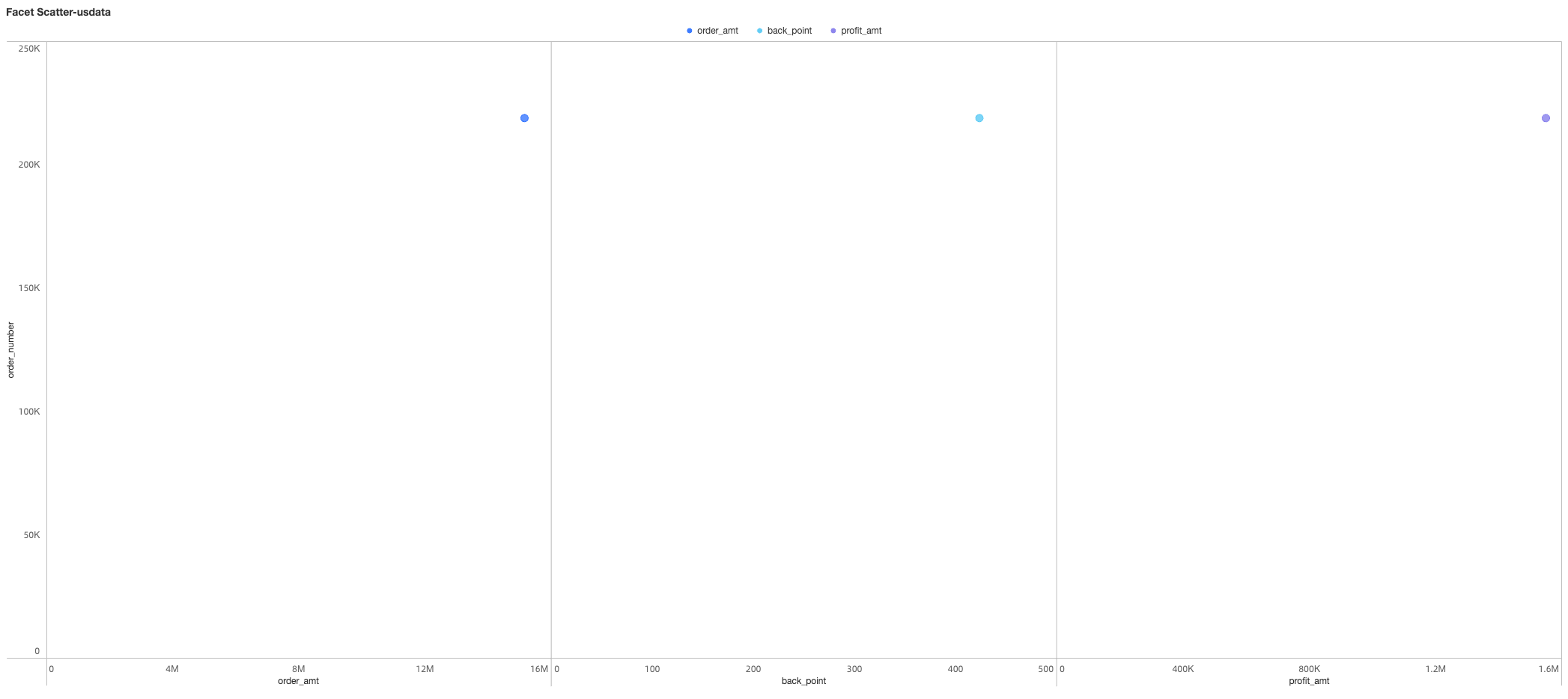
Create a chart
In the Data pane, select dimensions and measures based on your business requirements.
In the Measures list, double-click orderamt. You can also drag orderamt to the Y Axis (Mea.) field.
In the measure list, double-click order_number. You can also drag this measure to the X Axis (Mea.) section.
In the Dimension list, double-click product_type. You can also drag this dimension to the Color Legend (Dim.) section.
Click Update to create the LBS heat map.
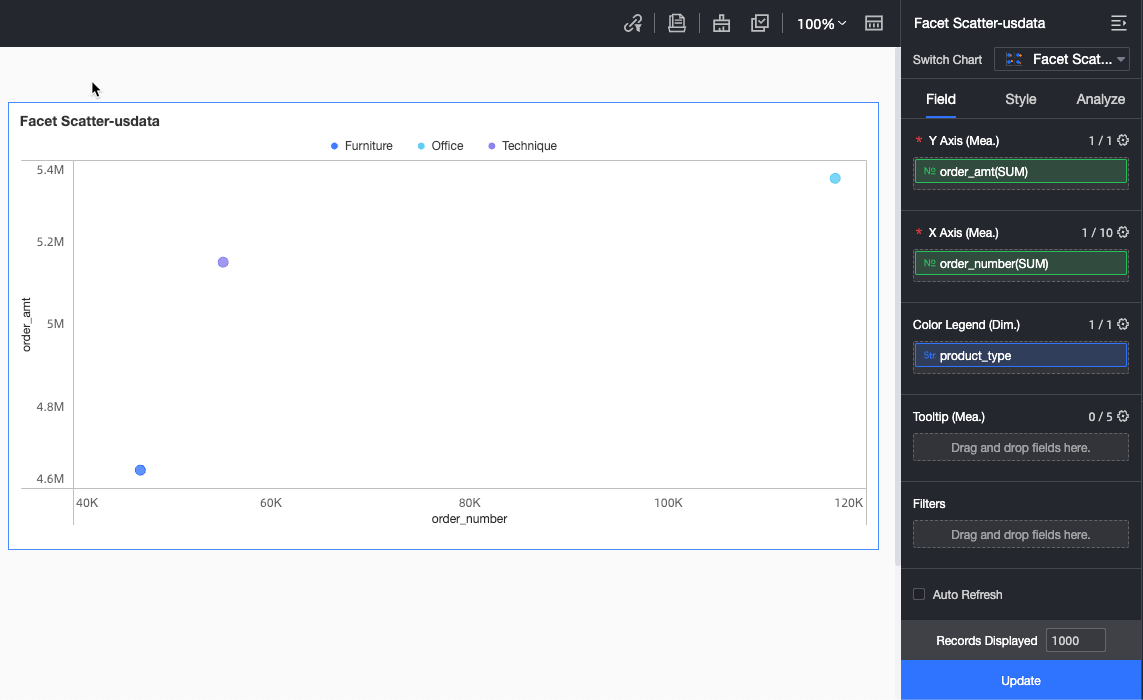
Set the Auto Refresh parameter.
After you select Auto Refresh, the system refreshes the chart as scheduled. For example, if you select Auto Refresh, enter 5, and then select Minutes, The system automatically refreshes chart data every 5 minutes.
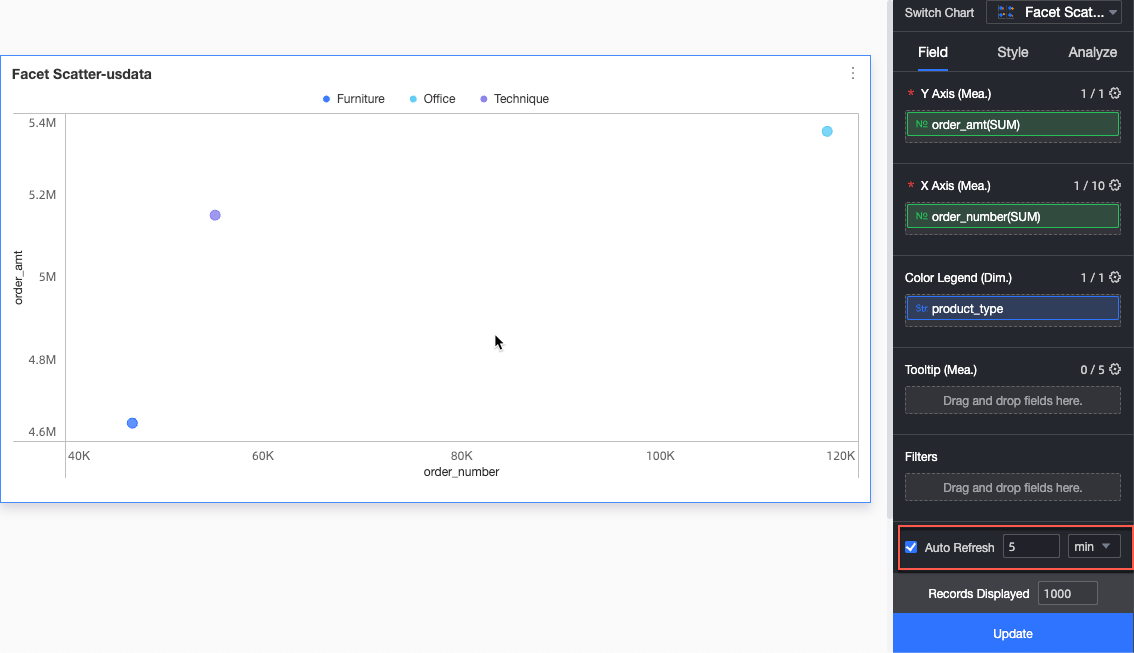
Configure the styles of the LBS heat map
The following section describes how to configure the styles of an LBS heat map. For information about the common style settings of charts, see Configure the chart title.
You can enter a keyword in the search box at the top of the configuration section to search for configuration items. You can also click ![]() Expand /Collapse All Categories in the right-side chart.
Expand /Collapse All Categories in the right-side chart.
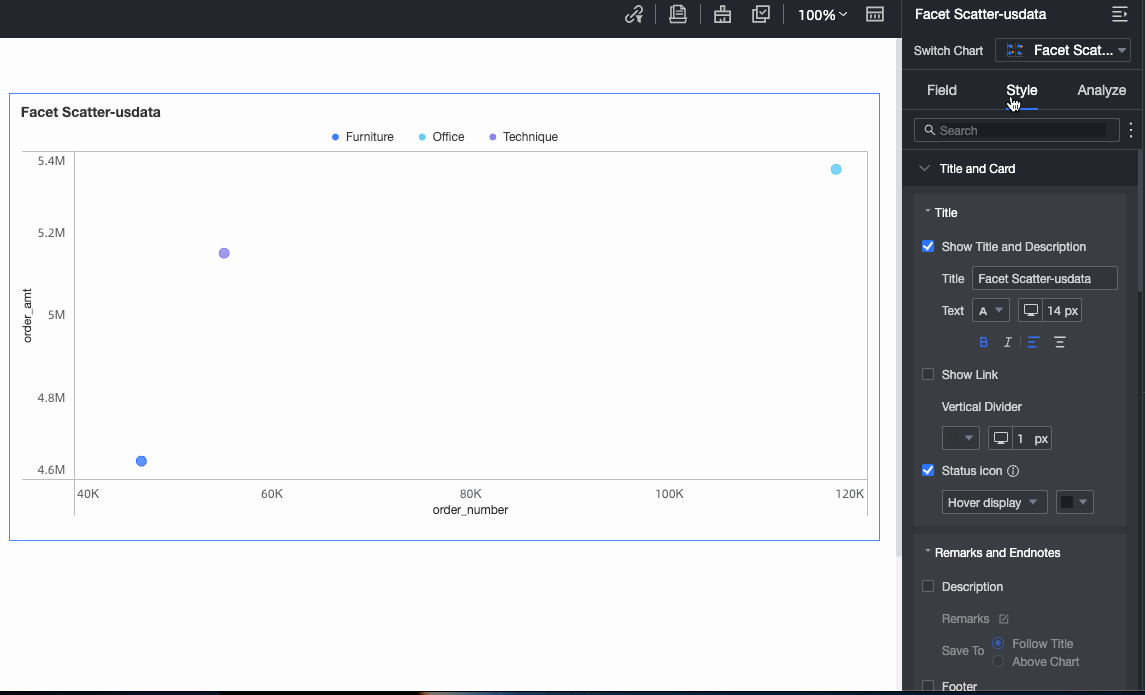
In the Chart Style section, configure Data Color.

In the Axes section, configure axis styles.
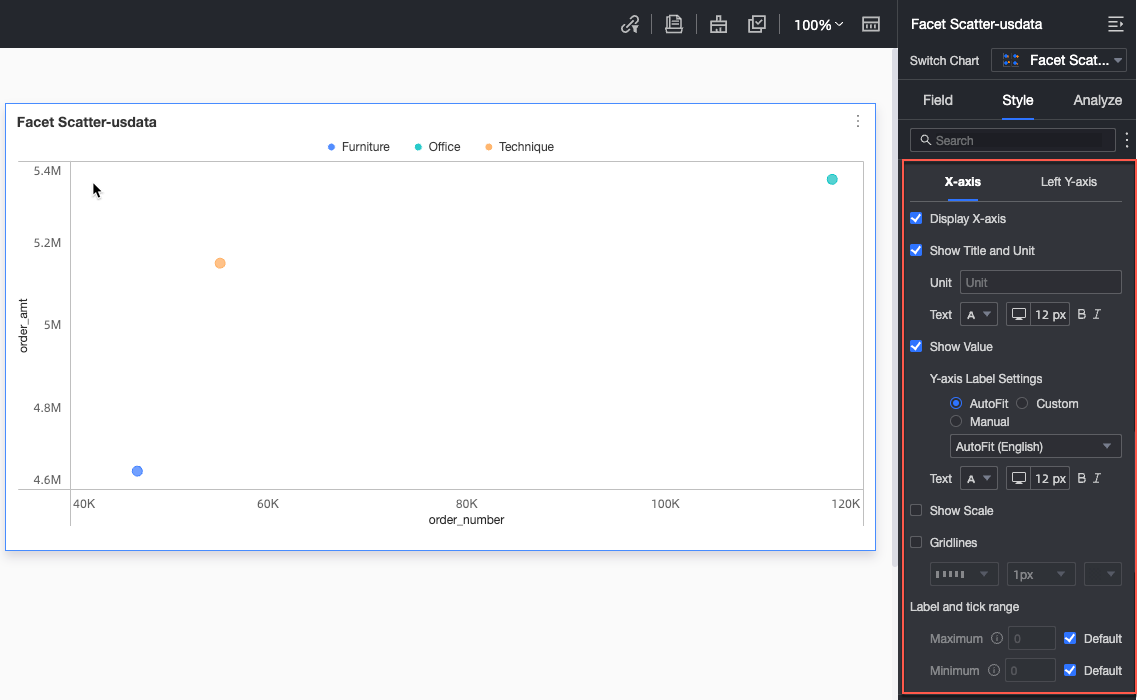
Parameter
Parameter
Description
X-axis
Display x-axis
Set whether to display x-axis.
Show Title and Unit
Specifies whether to show the title and unit of the x-axis.
Show Value
Sets whether axis labels are displayed on the horizontal axis.
Minimum and Maximum
The minimum and maximum values on the x-axis.
NoteIf you select Default, the minimum and maximum values are automatically displayed on the axis. If you clear Default, you can manually configure the minimum and maximum values on the axis.
Y-axis Label Settings
The display formats for labels on the axis. Options: AutoFit, Customer, and Manual.
NoteYou can also configure display formats for multiple measures at a time on the Field tab. For more information, see Configure a chart.
Show Scale
Specifies whether to show scales on the X-axis.
Gridlines
Specifies whether to show gridlines on the x-axis, including the line style, line width, and color of the x-axis.
Left Y-axis
Show Left Y-Axis
Set whether to display the left Y-axis.
Show Title and Unit
Specifies whether to show the title and unit of the left y-axis.
Unit
The unit for the left y-axis.
Show Value
Specifies whether to show values on the left y-axis.
Minimum and Maximum
Specifies whether to show the minimum and maximum values on the left Y-axis.
NoteIf you select Default, the minimum and maximum values are automatically displayed on the axis. If you clear Default, you can manually configure the minimum and maximum values on the axis.
Y-axis Label Settings
The display formats for labels on the axis. Options: AutoFit, Customer, and Manual.
NoteYou can also configure display formats for multiple measures at a time on the Field tab. For more information, see Configure a chart.
Gridlines
Specifies whether to show gridlines on the left y-axis, including the line style, line width, and color of the left y-axis.
Show Scale
Specifies whether to show scales on the axis.
Label and Scale Range
You can set the Maximum /Minimum value of the left Y-axis label and scale range based on Automatic or Manual Settings.
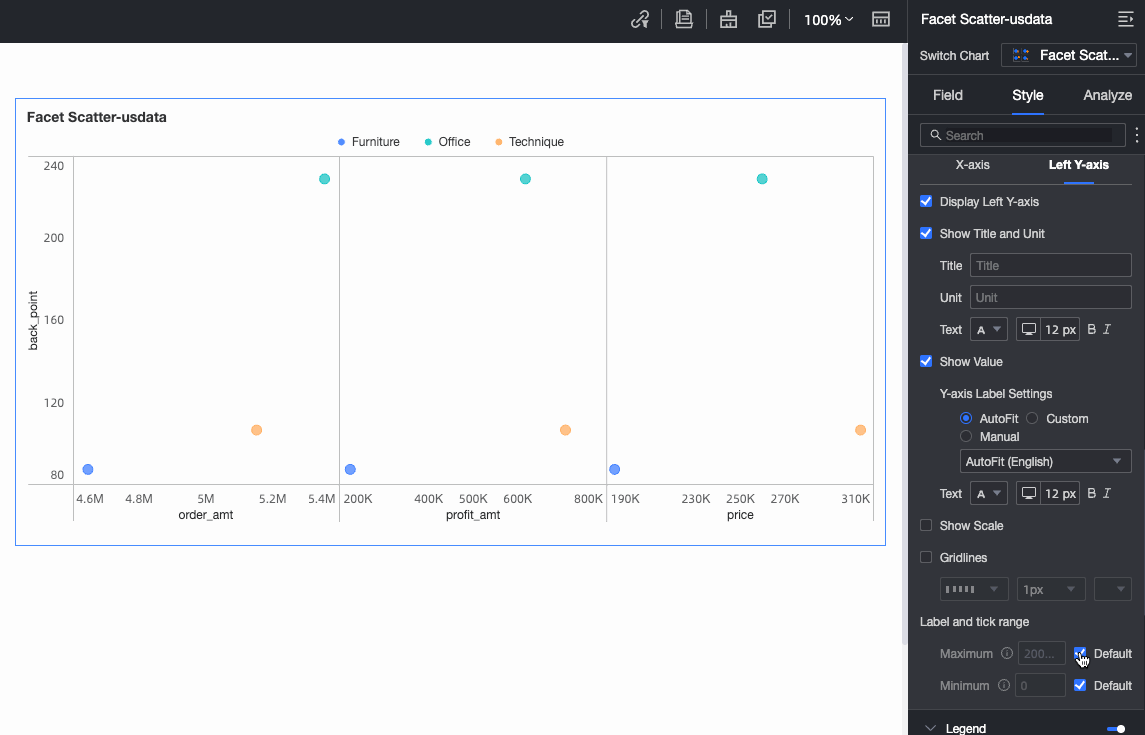
In the Legend section, configure Legend Position and Text Style.
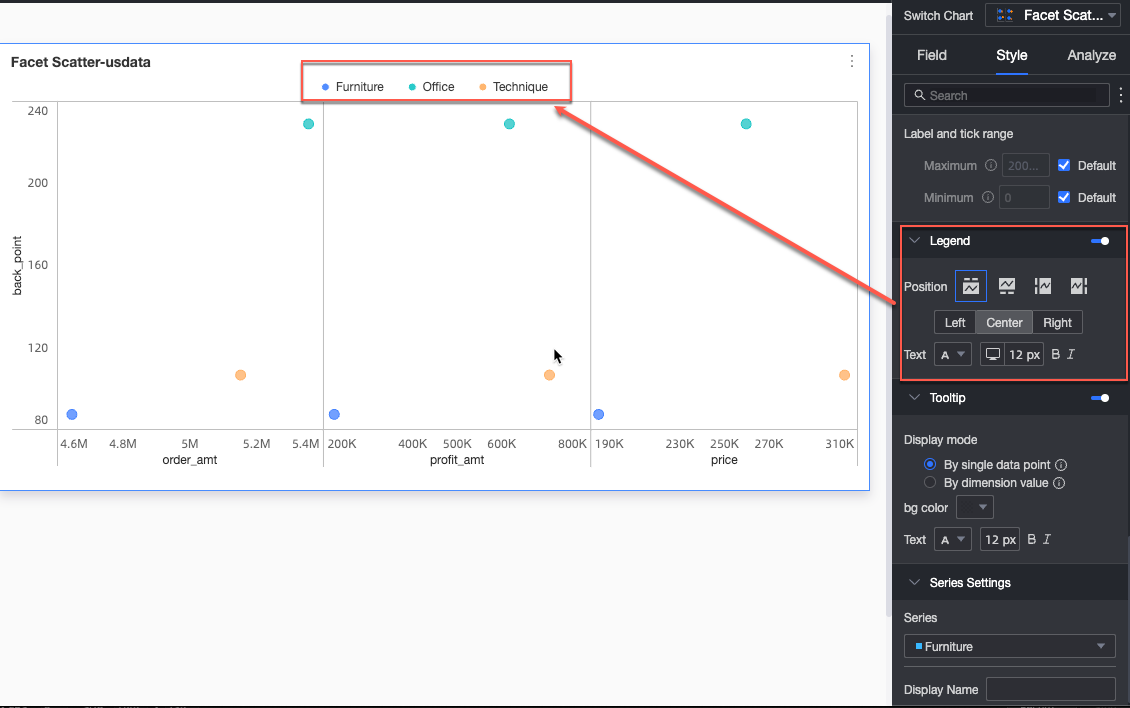
In the ToolTip section, set Whether to Show, Display Mode, Background Color, and Text Style.
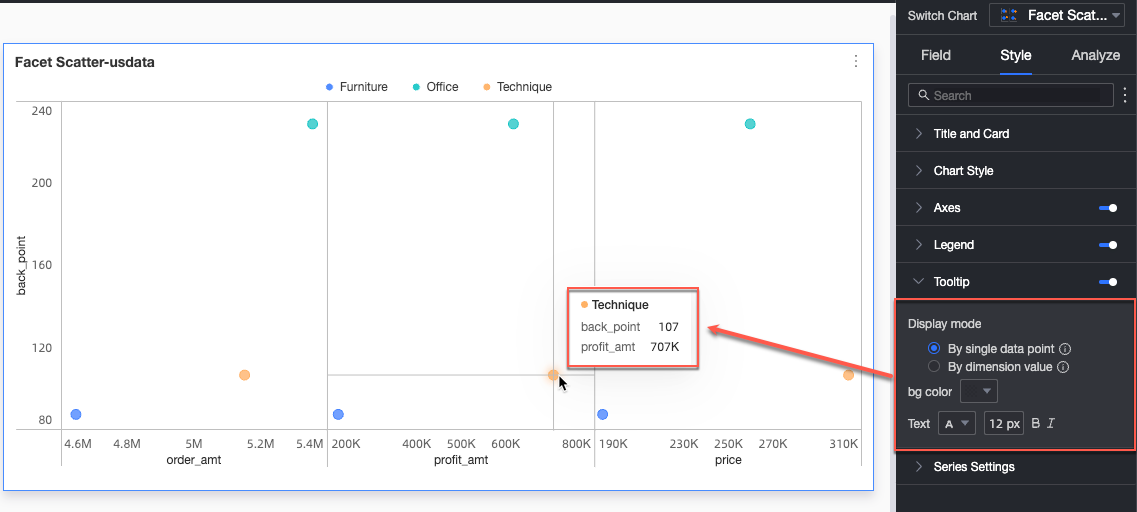
In the Series Settings section, you can configure the series.
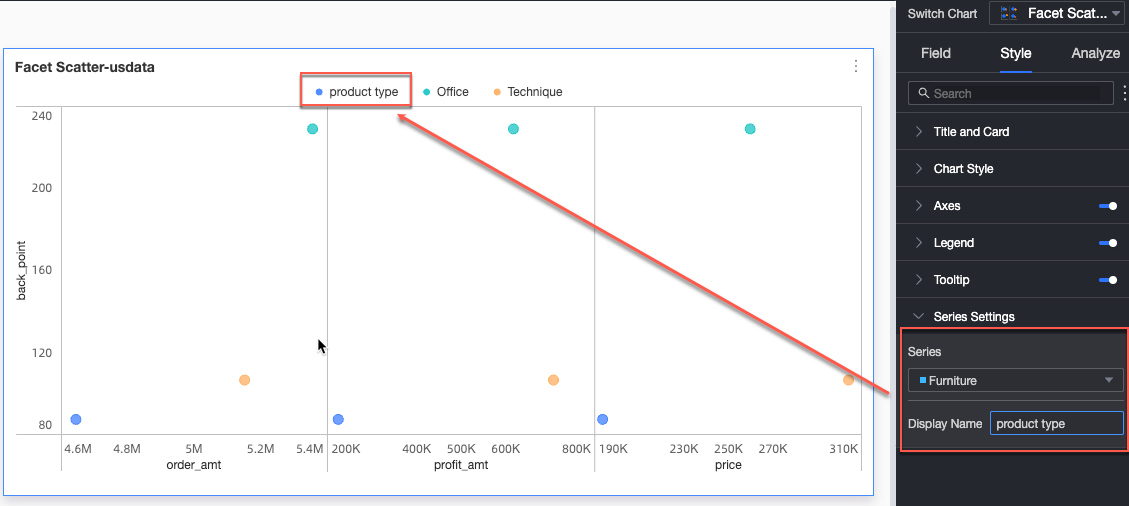
Chart configuration items
Descriptions of parameters
Series
The series. You can specify a measure or dimension based on your business requirements.
Display Name
You can specify an alias for a field in the facet scatter chart.
Chart analysis configuration
Parameter | Field | Description |
Data interaction | Linkage | If the data that you want to analyze belongs to different charts or tables, you can configure this feature to associate the charts and tables, and then analyze the data. For more information, see the "Configure the filter interaction feature" section in Drilling, filter interaction, and hyperlink. |
Hyperlink | If the data that you want to analyze belongs to different dashboards, you can configure this feature to associate the dashboards and then analyze the data. You can set the Hyperlink parameter to Parameter or External link. For more information, see the "Configure the hyperlink feature" section of the Drilling, filter interaction, and hyperlink topic. |
What to do next
You can share your dashboard with others. For more information, see Share a dashboard.
If you want to create a navigation menu for thematic analysis, you can integrate your dashboard into a business intelligence (BI) portal. For more information, see Create a BI portal.